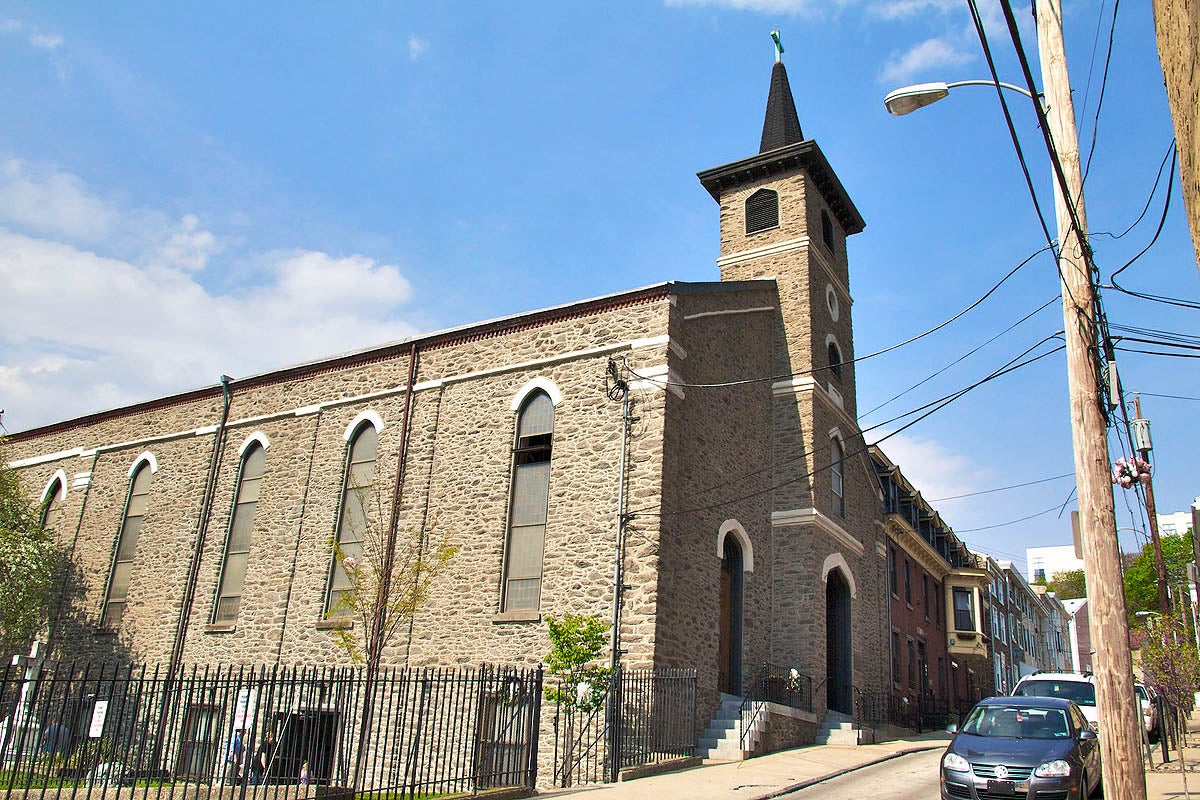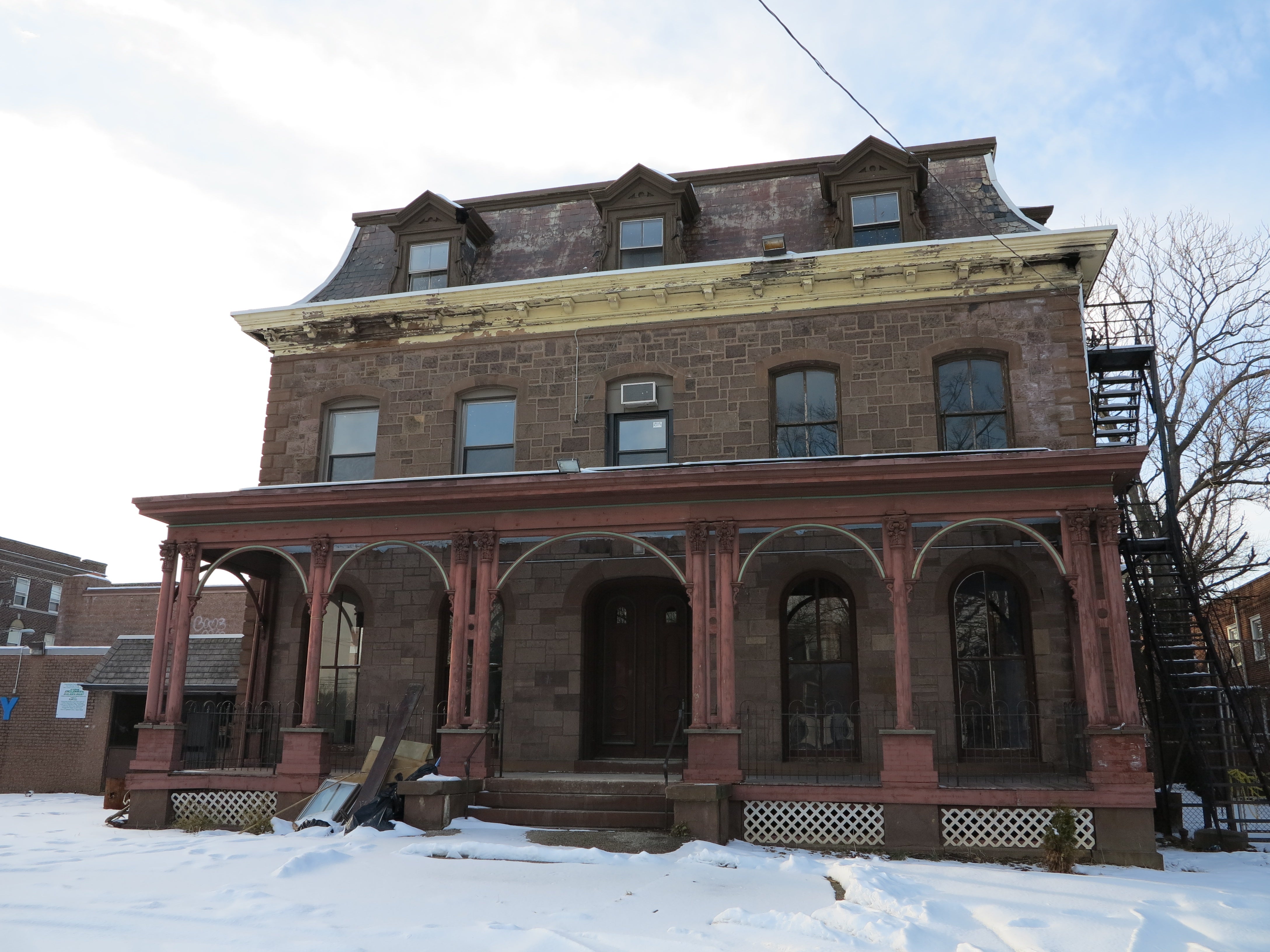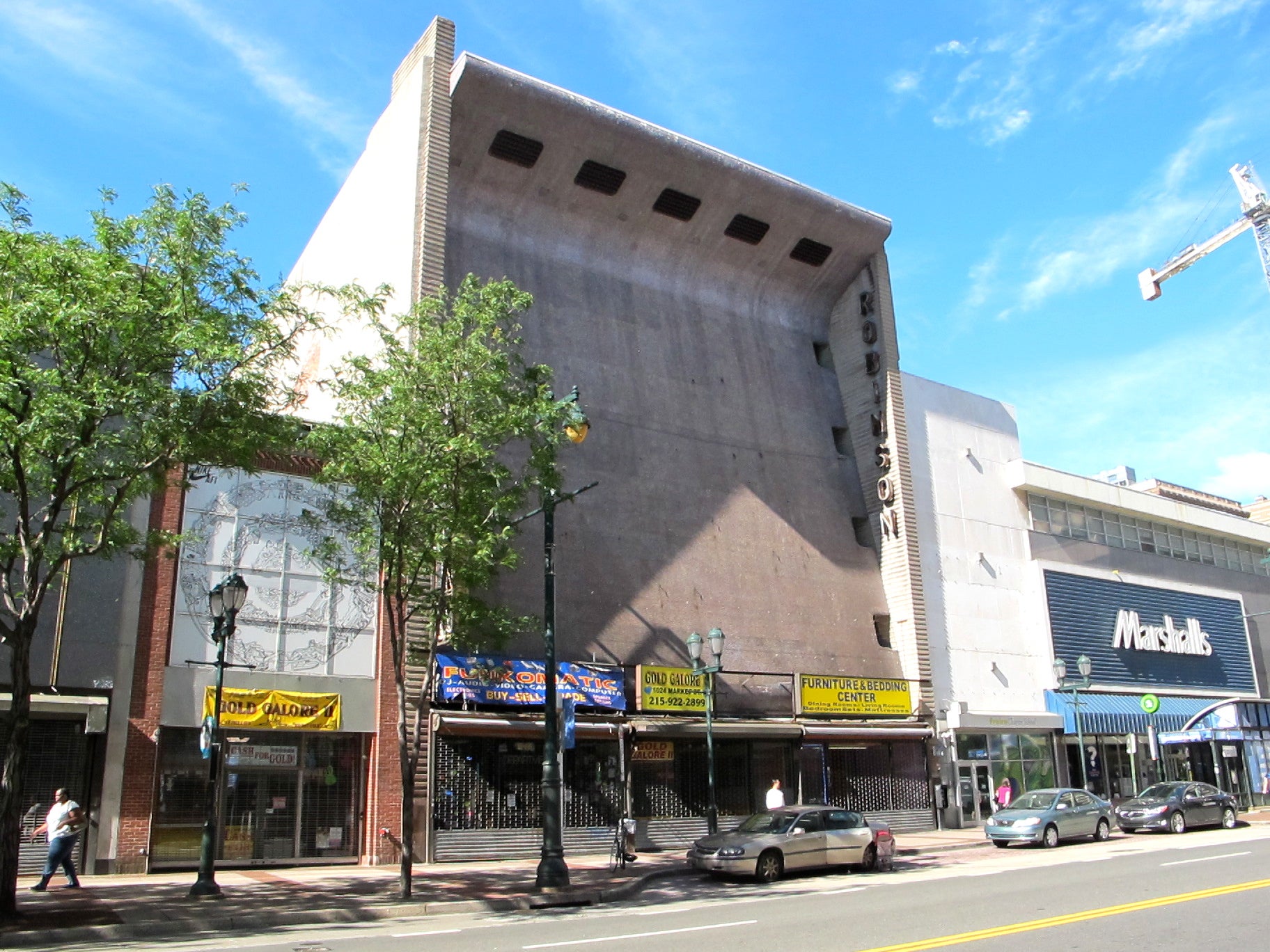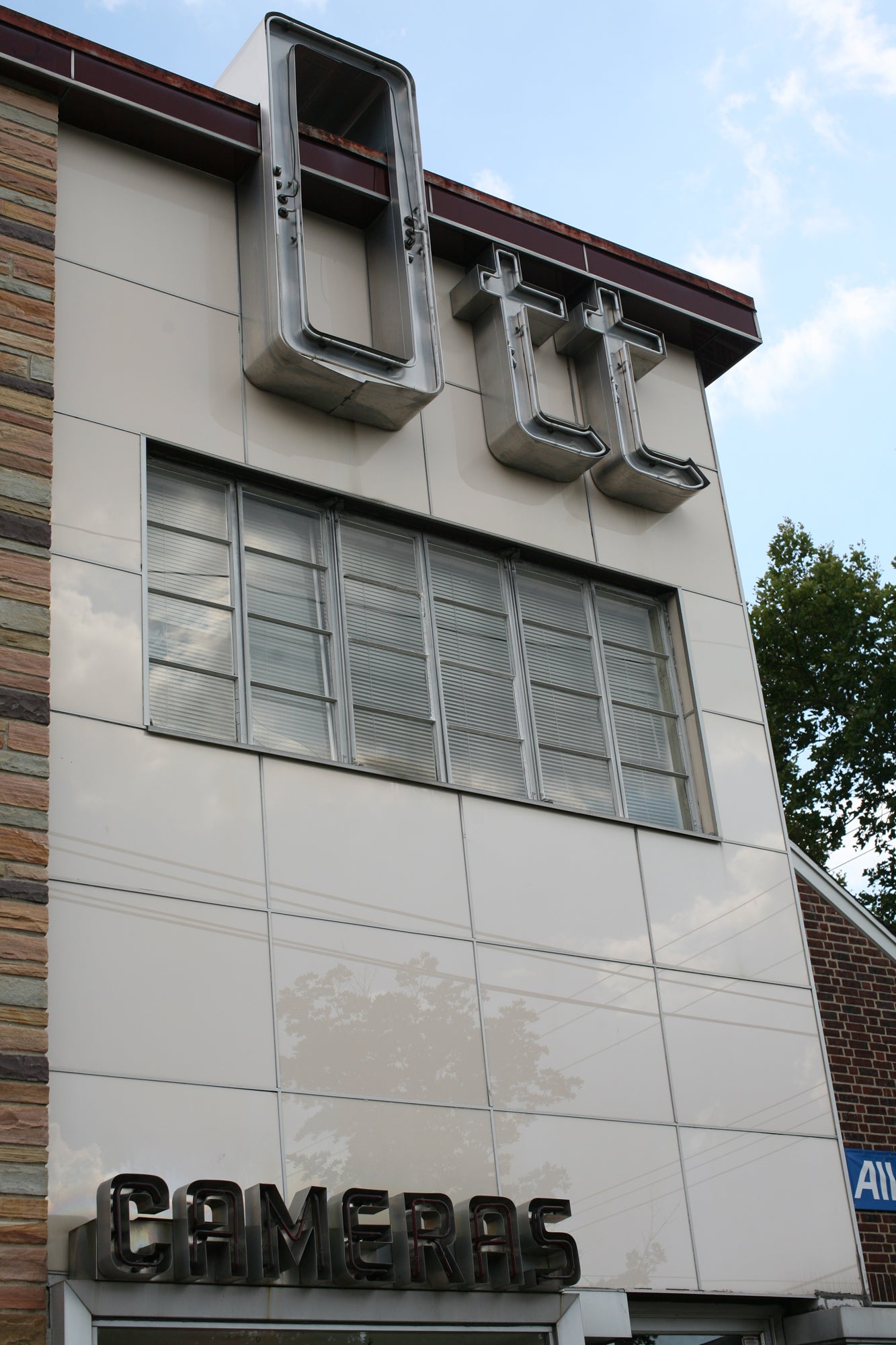From ‘Main Street Modernism’ to common fabric: 19 sites considered for historic designation

From prime examples of “Main Street Modernism” to common neighborhood rowhouse blocks, the Philadelphia Historical Commission’s committee on designation recommended last week that 19 properties be added to the Philadelphia Register of Historic Places, which will be considered by the full commission in July.
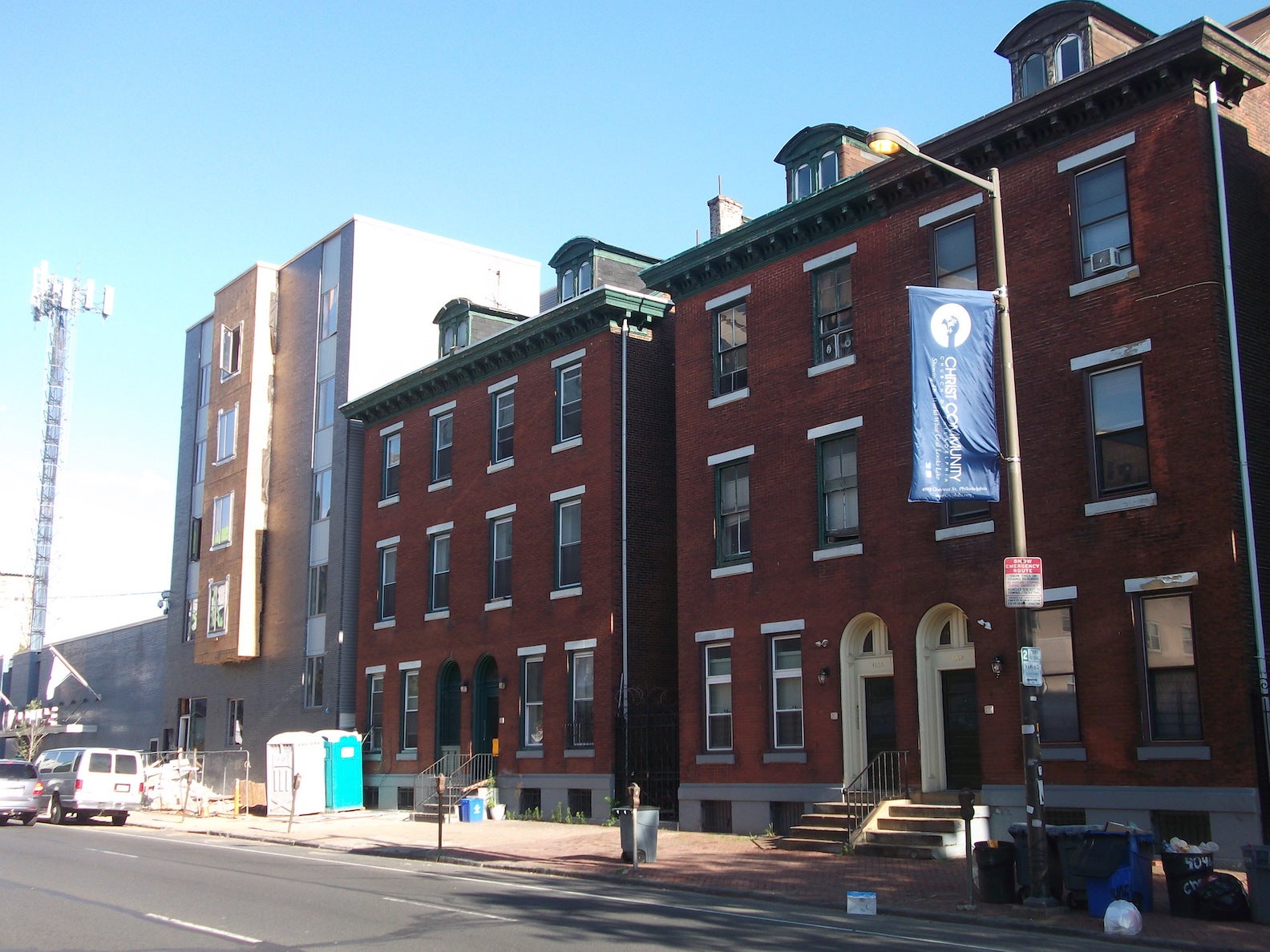
COMMON FABRIC
Two sets of once-typical 19th century neighborhood rows were advanced for consideration as historic, both at the edges of their neighborhoods, one in Northern Liberties and another in Spruce Hill.
4046-4056 CHESTNUT STREET
Four batched nominations were presented for sets of twins on Chestnut Street. The six buildings are owned by different entities, including the Penn-related limited partnerships, leased out and used as rental housing. Nominations for the set of “restrained Italianate” rowhouses were advanced by Penn preservation professor Aaron Wunsch, Elizabeth Stenger of the University City Historical Society, and historian Oscar Beisert, prompted as Wunsch said by “distress” over the loss of 19th century fabric in the neighborhood.
Demolition knocks at the door of these twins. A demolition permit application was submitted for the pair at 4046-4048 Chestnut Street, which as of the hearing date, was found to predate the submission of the historic nomination by two months. If the resulting demolition permit is valid, the demolition may advance and the pending nomination will have no bearing. A demolition permit for 4050-4052 Chestnut Street was submitted on the same day (May 16) that property owners were sent notice that this set has been nominated to the Philadelphia Register of Historic Places. That notice is what triggers Historical Commission jurisdiction over properties under consideration for nomination. So for the latter set no demolition permits will be issued until the Historical Commission approves.
These are not great individual works, nor are they particularly special works of an architect, Wunsch acknowledged. “Are they representative of the best urban fabric of the area? Yes, I believe they are.”
Yet, when considered together they have “extraordinary dignity,” said committee member David Schaff of the City Planning Commission, who said they recalled an American version of Bath, England. He added that the set holds the street wall through a uniform cornice line, a strong and regular rhythm.
Committee member Bruce Laverty, of the Athenaeum of Philadelphia, said that it’s dangerous to diminish these properties because they lack a “wow factor, “common buildings matter too. “We can’t just say, there’s plenty of those, why do we care… These are the DNA of Philadelphia buildings.”
These twins are sites of concern also because they’re a gateway into what was once being advanced as a Spruce Hill historic district, pointed out Ben Leech, formerly advocacy director at the Preservation Alliance for Greater Philadelphia.
There was unanimous support in recommending their designation by the Historical Commission.
81-95 FAIRMOUNT AVENUE
For the third time the City Planning Commission has advanced a nomination for the combined set of buildings along Fairmount Avenue just east of Delaware Avenue, calling them a “rare surviving example” of early Philadelphia waterfront housing. The set dates from the 1820s, and was substantially altered in the 1920s to combine the set as offices for the Terminal Warehouse Company.
Michael Sklaroff, attorney for the owner, contested the nomination. “Over the years the character defining features have been lost… the historical context is gone,” he said. He called the remaining building a “hodge-podge” unworthy of designation.
Historian George Thomas picked apart the nomination, calling its authors “not very good historians” and questioned the integrity of the buildings, which have been altered.
You could similarly demonstrate that Independence Hall doesn’t have enough original fabric at this point, retorted historian Oscar Beisert, who assisted in preparing the nomination.
The property owner, VMDT Partnership, also owns the bus parking lot across Fairmount and intends to include this site in its redevelopment plans.
Again the committee was unanimous in its support for recommending designation.
RARE EXAMPLES
A cluster of social and civic buildings were individually nominated for historic designation, including a closed Catholic church, the hall of a German singing society, a mansion turned Y, and a former firehouse.
2007-13 N. 2ND STREET: COLUMBIA SINGING SOCIETY
Despite the city’s rich German-American history, very few sites commemorating this past are listed in the Philadelphia Register.
Looming over rowhouses on North 2nd Street a few blocks below Norris Square is an expressive brick and stone building with round and arch-topped windows, topped with an octagonal crown of painted tin flanked by two domes. It was built to house a singing society and serve as a social hall.
It is, according to an owners’ representative, a shell unworthy of preservation. To the staff of the Historical Commission, which prepared the nomination it’s a unique example of late-19th century architecture, with a German accent, by the short-lived but prolific firm Schaeffer & Ausfeld.
A representative of the owner questioned the staff’s preservation credentials and called the building a “bastardization of style” in contesting the nomination.
Committee chair and architectural historian Emily Cooperman retorted, “Buildings unfortunately are not like bird species…because architects and builders have the ability to choose which details they want to put on a building.”
She further clarified that its architectural style be revised in the nomination as an expression with roots in architecture of German-speaking people of the period – rundbogenstil, literally translating to a “round arched” style.
The committee unanimously approved recommending the nomination.
176 CONARROE ST: ST. MARY of the ASSUMPTION
In 2012 two of Manayunk’s “ethnic” Catholic parishes, St. Mary and St. Josaphat, merged into St. John the Baptist. St. Mary’s, built in 1849, was kept as a worship site until last year, when the Archdiocese officially closed the parish. Monsignor Kevin Lawrence notified the St. John’s community of the pending sale of St. Mary’s in March.
Historian John Manton prepared the nomination for the complex, which covers the church and rectory on a single tax parcel.
The Archdiocese of Philadelphia, which has instructed churches not to cooperate with independent preservation efforts, did not contest the nomination. Attorney Michael Phillips said the Archdiocese’s only concern is to ensure that any designation would not interfere with court orders permitting the removal and reinterment of five former clergy members resting in the churchyard. (It would not.)
It also helps that the buyer lined up is preservation-minded and working with the firm Campbell Thomas & Co, on an “appropriate adaptive reuse,” architect Jim Campbell said.
Again the committee unanimously recommended historic designation.
4704 LEIPER ST: GARSED/BROMLEY MANSION, FRANKFORD YWCA
A remarkably intact 1860s brownstone mansion associated with Philadelphia mill owners, turned beloved YWCA, in Frankford has long been waiting for a new future, as we reported in 2014.
In 2013 the New Frankford Community Y, a newly-formed nonprofit, assumed ownership of the complex. One board member, Northwood lawyer Frank Bennett, was given a 99-year lease for the property in exchange for the promise to rehabilitate the historic building. Bennett began restoration activity, but there has been no significant movement at the historic property. Frankford neighbors and historians remain concerned for its future and advanced a nomination for the historic mansion.
Joe Menkevich, who helped prepare the nomination, said some in the neighborhood wanted to see the old building knocked down rather than have it turned into a recovery house. Debbie Klak, a nominator and former president of the Historical Society of Frankford, said she’s kept a watchful eye on the building for the last decade. “It’s so important to the integrity of the neighborhood.”
No representative of the nonprofit owners was present and the committee recommended the building’s nomination.
1026-28 BELMONT AVE: ENGINE 16
A former firehouse on Belmont Avenue in West Philadelphia is the kind of former public building that is boastfully Philly.
“It still demonstrates so much civic pride,” said committee member David Schaff, complete with terra-cotta version of the city seal. It was the work of architect John Windrim, one of Philadelphia’s most important civic designers, and built to house Engine 16.
Today the former firehouse is owned by the Evangelistic Temple of I Am, Inc. and is not in great condition. There are property maintenance violations and obvious deterioration. That said, committee members were persuaded that the building is not so far gone, and retains its “capacity to represent its history.”
The University City Historical Society advanced the designation, which was unanimously supported by the committee.
‘MAIN STREET MODERNISM’
A trio of mid-century modern commercial buildings is being considered for designation thanks to nominations by Ben Leech, former advocacy director at the Preservation Alliance for Greater Philadelphia, on behalf of the Preservation Alliance. Leech was praised by committee members for outstanding research and committee members unanimously supported the three sites.
1020-24 MARKET ST: ROBINSON STORE
As Center City was reborn in the post-war years, stores like Robinson’s cropped up in highly modern storefronts along corridors like Market Street. At Robinson’s, a monolithic tiled wave swells over Market Street, designed to be a huge billboard for the discount fashion chain. It was the work of Victor Gruen and his then-wife and partner Elsie Krummeck. If Gruen’s name is familiar it is likely as the “father of the shopping mall” but here we see Gruen the commercial architect, or as preservation professor Aaron Wunsch said, “Victor Gruen before he gave up on downtown.”
The former Robinson’s sits across the street from the former Gallery, which is being turned into an outlet mall. PREIT and Macerich Co, the development companies behind the Gallery revamp, recently purchased three buildings across Market Street, including Robinson’s.
A lawyer for the owners and a preservation consultant respected the merits of the building’s pedigree, but expressed concern that the building’s integrity and context were both diminished.
Attorney Tony Forte representing the owners said, “designating the building would be a tremendous obstacle to redevelopment” and said should it be designated they would come back before the commission asking permission to demolish it almost immediately.
“Maybe it is ill placed for a current vision of development, but perfectly placed for another,” said Leech.
Though the building is altered, the committee recommended designation. Emily Cooperman said that its very form, particularly given the modern vocabulary of minimalism, was legible and a character defining feature.
5129-35 FRANKFORD AVE, PENN FRUIT
The Penn Fruit Company is an early regional supermarket chain and its stores, several of which survive, are recognizable in form: Each store is barrel-shaped, and each was individually architect designed. One in Frankford, operating as a Thriftway, is owned by Rite Aid of Pennsylvania and is the only full grocery store in Frankford.
Ellie Devyatkin, Frankford CDC corridor manager, requested more time before the commission votes on the designation. There is openness to designation but Frankford CDC and the owners are concerned the potential for the property’s use for a transit-oriented development given its proximity to the Frankford Transit Center. That possibility needs further exploration, they said, as do the possibilities for necessary upgrades to keep the store competitive.
The committee was receptive to designation, recommending approval. At the full commission meeting in July the Preservation Alliance may request their nomination be tabled to give time for further conversation and consideration by the owner and CDC. *
6901 CASTOR AVE, OTT CAMERA
Ott Camera on Castor Avenue is one of the highest examples of “main street modernism” we have, and committee members were smitten with the idea of its nomination.
Huge neon letters adorn a sleekly boxy store with two large windows, proclaiming for all who pass what was sold inside. The building changed hands but it is highly charismatic and largely intact.
Martin Treu, author of the book Signs, Streets, and Storefronts, offered a letter of support saying Ott Camera is “one of America’s finest examples of modernism on Main Street” and that it may even be his favorite in the nation.
New owners have altered the building, removing ground-floor neon and installing an awning over the main entry, without a permit though it was under the jurisdiction of the Historical Commission. The commission requested the Department of Licenses & Inspections inspect and issue a violation.
NOMNIATIONS ALSO RECOMMENDED:
- 1325 BEACH ST, PECO DELAWARE STATION
- 1834-48 FRANKFORD AVE, MUTUAL BURIAL GROUND OF KENSINGTON
- 339 E. WISTER ST
- 1527 N. FRONT ST
- 1132-40 N. FRONT ST, DOUGHERTY BONDED WAREHOUSE
* NOTE: An earlier version of this article stated the designation committee recommended tabling the nomination for Penn Fruit. The committee recommended designation. PlanPhilly regrets the error.
WHYY is your source for fact-based, in-depth journalism and information. As a nonprofit organization, we rely on financial support from readers like you. Please give today.



